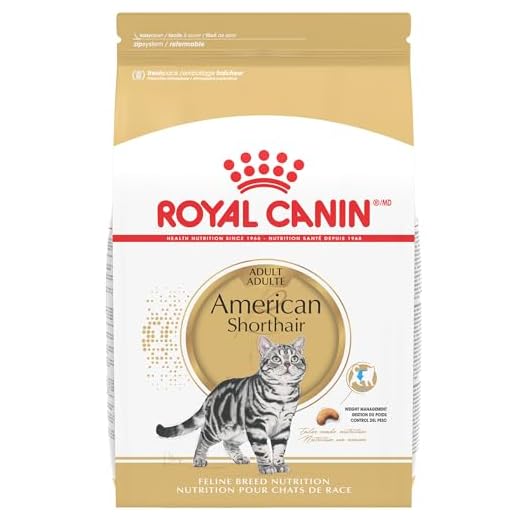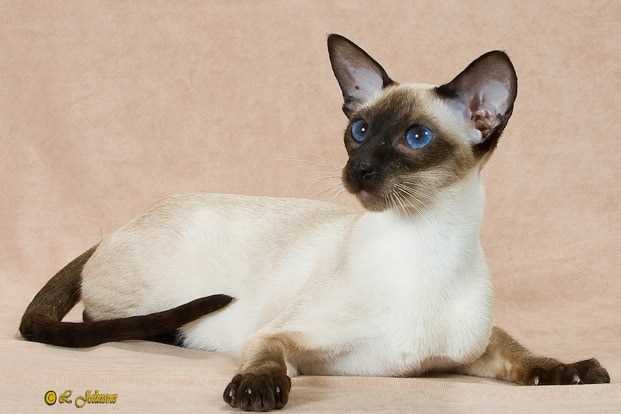


Choosing an ideal feline companion to manage rodent populations requires consideration of specific breeds known for their hunting instincts. The article discusses various breeds that excel in this area, highlighting their characteristics and suitability for homes plagued by unwanted pests.
This guide is beneficial for homeowners dealing with rodent infestations, individuals seeking to adopt a pet with natural hunting abilities, and those interested in the behavioral traits of different feline breeds. By understanding which types of cats thrive as hunters, you can make an informed choice for both companionship and pest control.
In the following sections, you’ll discover breeds like the Siamese, Burmese, and Abyssinian, each with unique traits that make them exceptional hunters. We will explore their history, temperament, and effectiveness in keeping rodent numbers down, providing you with practical insights to select the right feline for your needs.
Best Felines for Rodent Control
For effective rodent management, certain breeds excel due to their natural hunting instincts and agility. These animals can significantly reduce infestations in homes, barns, and warehouses.
Consider breeds known for their predatory skills. These felines possess keen senses and an innate ability to stalk and capture small prey. Their energetic and playful demeanor enhances their effectiveness in this role.
Characteristics of Effective Hunters
- Size and Agility: Medium to large breeds tend to be more effective due to their strength and speed.
- Playfulness: High energy levels and a playful nature encourage hunting behaviors.
- Intelligence: Quick learners can adapt their strategies for catching elusive prey.
Some breeds are particularly noted for their hunting prowess:
- American Shorthair: Known for their strength and adaptability, making them excellent hunters.
- Bengal: Agile and energetic, Bengals enjoy active play that mimics hunting.
- Siamese: Highly intelligent, they can quickly learn to hunt and track rodents.
When selecting a feline for pest control, consider their temperament and environment. A friendly and social animal will adapt better to homes, while a more independent breed may thrive in larger spaces.
| Breed | Characteristics |
|---|---|
| American Shorthair | Strong, adaptable, and skilled at hunting. |
| Bengal | Energetic, agile, and playful. |
| Siamese | Intelligent and quick learners. |
Choosing the right feline can greatly enhance your ability to manage rodent populations effectively. Each breed offers unique advantages that can be leveraged for optimal results.
Breeds Known for Their Hunting Instincts
Several feline breeds excel in their ability to hunt small rodents, demonstrating strong predatory instincts. These breeds have been historically recognized for their prowess in managing pest populations, particularly in rural and agricultural settings.
Among these, some breeds stand out due to their unique characteristics and hunting techniques. Their agility, sharp senses, and playful yet determined nature make them ideal candidates for rodent control.
Notable Breeds with Excellent Hunting Skills
-
Domestic Shorthair: This breed is known for its adaptability and sharp hunting instincts. Their varied backgrounds contribute to a range of skills, making them effective in catching small animals.
-
Siamese: Renowned for their intelligence and agility, these felines are attentive hunters. They possess a keen sense of sight and sound, which aids in locating prey.
-
American Shorthair: With a history of working on farms, this breed is well-equipped for hunting. Their muscular build and playful demeanor make them natural hunters.
-
Turkish Angora: Known for their agility and strong hunting drive, these cats are both playful and skilled at capturing small creatures. Their high energy levels contribute to their effectiveness.
-
Norwegian Forest Cat: Adapted to survive in the wild, this breed has an innate ability to hunt. Their physical strength and sharp claws make them formidable hunters.
In addition to breed characteristics, a cat’s environment and early experiences can influence its hunting effectiveness. Providing opportunities for play and exploration can enhance these instincts.
For those seeking to manage rodent populations, selecting a breed known for its hunting capabilities is a practical approach. These breeds not only provide companionship but also contribute to a natural form of pest control.
Characteristics That Make a Cat an Effective Rat Catcher
A feline’s natural instincts play a significant role in its ability to hunt small rodents. Key traits such as agility, sharp reflexes, and a keen sense of hearing contribute to its success in this task. These attributes enable a hunter to quickly spot and pursue its prey, ensuring a higher success rate in capturing unwanted guests.
Another important aspect is the cat’s temperament. A confident and assertive personality often leads to more determined hunting behavior. Additionally, a curious nature allows for exploration of potential hiding spots where rodents may dwell. This combination of traits enhances the overall hunting skills of the animal.
Physical Attributes
- Agility: Quick movements and the ability to jump high help in navigating various terrains.
- Sharp Claws: Retractable claws are essential for gripping surfaces and catching prey.
- Heightened Senses: Exceptional vision, especially in low light, allows for spotting movements easily.
- Stealth: A quiet approach minimizes the chances of alerting rodents.
Behavioral Traits
- Playfulness: A playful demeanor can mimic hunting behavior, sharpening skills over time.
- Independence: A self-sufficient nature often leads to effective solo hunts.
- Focus: A strong concentration on the hunt increases the likelihood of success.
- Territorial Instincts: A cat that feels its space is threatened may be more motivated to eliminate invaders.
In summary, a combination of physical and behavioral traits greatly influences a feline’s prowess in controlling rodent populations. Understanding these characteristics can aid in selecting an ideal companion for this purpose.
Environmental Factors to Consider for Optimal Hunting
To enhance the ability of felines to locate and eliminate small rodents, specific environmental conditions must be optimized. The hunting prowess of these animals can significantly improve with the right surroundings.
Providing an environment that mimics their natural habitat is key. Areas with ample cover, such as tall grass, bushes, and trees, allow these creatures to stalk and ambush their prey effectively. Additionally, ensuring that there are plenty of hiding spots can increase the likelihood of successful hunts.
Key Environmental Elements
Several aspects play a role in ensuring a conducive hunting environment:
- Lighting: Natural light is beneficial, as it aids in spotting movement. Avoid overly dark areas that may hinder visibility.
- Noise Levels: A quiet environment allows for better concentration and focus. Loud noises can scare away potential prey.
- Food Sources: Ensuring an availability of food for smaller rodents can attract them, thus increasing the chances of a successful hunt.
- Water Sources: Proximity to water can also attract rodents, creating a more active hunting ground.
Creating a diverse habitat with varying heights and textures can stimulate hunting instincts. Incorporating elements such as rocks or logs can provide additional stimulation and challenge, sharpening their skills.
Monitoring the population of small rodents can also provide insights into the effectiveness of the hunting environment. A noticeable decline in their numbers may indicate a successful predation rate, while a stable population might suggest a need for environmental adjustments.
Training Techniques to Enhance Your Cat’s Rat-Catching Skills
Utilize playtime as a training opportunity. Engage your feline companion with toys that mimic the movement of rodents, such as small balls or feathered wands. This encourages natural hunting instincts and sharpens reflexes.
Positive reinforcement is a powerful method. Reward your pet with treats or praise immediately after they demonstrate desired behaviors, such as stalking or pouncing. This will strengthen the connection between their actions and rewards.
Key Techniques
- Play Hunting: Use interactive toys to simulate hunting scenarios.
- Clicker Training: Implement a clicker to mark successful behaviors, followed by a reward.
- Obstacle Courses: Create a mini obstacle course to develop agility and problem-solving skills.
- Gradual Exposure: Introduce them to different environments where they may encounter rodents.
Tracking and observing your pet’s progress is essential. Document their behavior during training sessions to identify areas of improvement and adjust techniques accordingly.
In conclusion, through consistent practice and reinforcement, you can enhance your companion’s natural abilities. Tailoring training to their preferences ensures a more engaging experience, ultimately leading to a more proficient hunter.
Best cats for catching rats
Features
| Part Number | 549631 |
| Model | 549631 |
| Color | Brown |
| Size | 5.5 Pound (Pack of 1) |
Features
| Model | SPD-01112 |
| Warranty | Not only do we offer high-quality products, we back them up with a 12-month warranty and a 30-day money-back guarantee! |
| Color | Sky Blue |
Video:
FAQ:
What are the best breeds of cats for catching rats?
Some of the best cat breeds for catching rats include the Siamese, Burmese, and Domestic Shorthair. These breeds are known for their agility, hunting instincts, and playful nature. Siamese cats, for example, are very active and have strong predatory skills. Burmese cats are also known for their intelligence and playful behavior, making them effective hunters. Domestic Shorthairs are mixed-breed cats that can have a variety of traits, but many possess excellent hunting abilities due to their diverse ancestry.
How do I train my cat to catch rats?
Training a cat to catch rats can be a fun process. Start by encouraging your cat to play with toys that mimic the movement of rats, such as small balls or feather wands. You can also use treats to reward your cat for showing interest in these toys. Gradually introduce your cat to areas where rats are likely to be found, ensuring your cat feels safe and confident. Always supervise your cat during these outings, as their safety is a priority. Remember, cats are natural hunters, so with the right encouragement, they might take to it quite well on their own.
Are there specific environments where cats are better at catching rats?
Cats tend to be more effective at catching rats in environments where there is plenty of cover and hiding spots. They thrive in areas with tall grass, bushes, or cluttered spaces where rats might reside. Urban areas with alleys, basements, and warehouses can also provide good hunting grounds for cats. Additionally, a cat’s ability to catch rats can be enhanced if they have access to outdoor spaces where they can roam and explore. Providing a safe, stimulating environment can encourage your cat’s natural hunting instincts.
What should I do if my cat catches a rat?
If your cat catches a rat, it’s important to handle the situation carefully. First, ensure that your cat is safe and not injured. Rats can carry diseases, so it’s wise to keep a safe distance from the caught rat. You can encourage your cat to leave the rat alone by distracting them with a toy or treat. Afterward, dispose of the rat properly, ideally by placing it in a sealed bag and throwing it away. Always monitor your cat for any signs of illness following such events, and consider consulting a veterinarian if you have concerns about their health.







